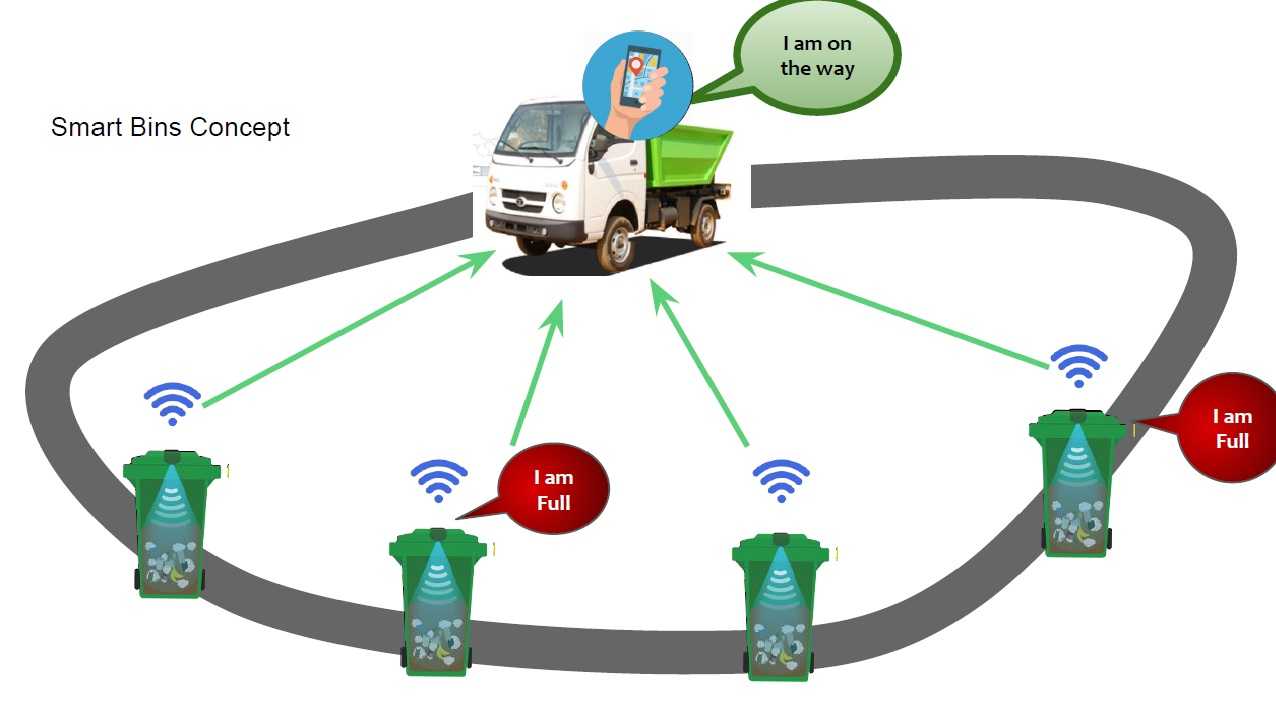

The solution also features Advanced Data Analytics through which the waste collection managers can know the future waste generation and can plan the resources accordingly. The solution does not limit to allowing the managers to set up the pickup routes. The solution takes care of this issue by allowing the waste collectors to keep track of every bin’s fill status and schedule the pickup on time. Another malicious effect is on the waste collection staff and it is the risk of picking up and handling overflowing garbage which can cause them infections or chronic diseases. One of the ill effects of overflowing garbage containers is air pollution, which causes lung diseases and numerous health problems as contaminants are absorbed from lungs into other parts of a human body. So, there will be no missed pickups, keeping the residents away from the disease which occurs due to bacteria, vermin and insects prosper from the garbage. Using the solution, the managers, as well as the garbage truck drivers, can see which garbage containers are not picked up and needs to be picked. It has been seen that the solution has reduced the operational cost of municipalities up to 80%. The solution reduces waste collection frequency dramatically, enabling you to save on fuel, labor, and fleet maintenance costs. Here are the benefits of opting for Intellia Smart Waste Management System: Intellia Smart Waste Management System empowers waste collection staff to know fill-levels in real-time and get notified of waste overflows. In highly populated areas, a rapid waste generation usually leads to overflowing waste bins and ugly streets. Contact us to know the implementation cost for your city. But, the cost of those image processing cameras is higher as compared to the ultrasonic sensors, which leads to high solution implementation cost. Some of the same solution providers prefer to go with an alternative solution using image processing and camera as a passive sensor. The management staff gets their own personalized administration panel over a computer/tablet which gives them a bird eye view over the entire operations.

As they go collecting the garbage from the containers, the management is also aware of the progress as the vehicle, as well as the garbage containers, are traced in real-time. Real-time GPS assistance directs them to the pre-decided route.
#SMART TRASH MONITORING SYSTEM DRIVERS#
Nevertheless, cities allocate a huge amount of resources that are able to visit all the garbage containers and waste bins at the same frequency, at the same time.Īlso, the drivers can access the application on their mobile phone/tablets using the internet. This is even the same for the garbage containers in a different location in the same street. So, the garbage cans and dumpsters throughout the city do not fill up at the same speed. The garbage produced in different areas in a city varies widely. This scenario is almost the same either in the most developed countries. In this regard, a routine of picking up garbage would be as garbage trucks set off, take the predetermined route and stop by every dumpster/garbage container as they go. But, refuse or waste collection still seems to be managed using traditional methods and the adoption of technology to make it efficient is not fast enough. The rest is generally compensated by the tax revenue collected by the local governments, creating a strain and uncollectible load for both on taxes and local government budgets.ĭue to environmental concerns, developed countries tend to spend more on waste management processes. Most of the high-income cities collect a part of this cost from their citizens as fees, which counts to around $170. To collect and manage this waste, the authorities require $300 per capita annually. The statistics state that today, urban populations produce around 4.6 Kilograms of solid waste per capita. Urban waste collection is expenditure on government budgets.


 0 kommentar(er)
0 kommentar(er)
